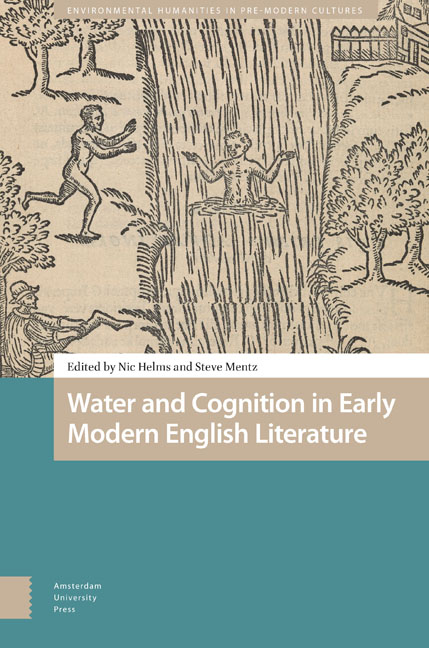Book contents
Introduction : Watery Thinking: Minds and Water In and Beyond the Early Modern Period
Published online by Cambridge University Press: 16 April 2024
Summary
Abstract
Water and cognition would seem to be unrelated, the one a physical environment and the other an intellectual process. The animating claim of this book shows how bringing these two modes together revitalizes our understanding of both. Water and especially oceanic spaces have been central to recent trends in the environmental humanities and premodern ecocriticism. Cognition, including ideas about the “extended mind” and other forms of distributed cognition, has also been important in early modern literary and cultural studies over the past few decades. This book contains contributions by influential voices in both early modern cognitive studies and the blue humanities, but its central project aims not only to think “water” and “cognition” as distinct critical modes, but also to combine them in what this introduction terms “watery thinking.”
Keywords: cognitive studies, blue humanities, extended mind, distributed cognition, ecocriticism, mindreading
“O Lord! Methought what pain it was to drown” (Richard III 1.4.21).George, Duke of Clarence's nightmare premonition of death by drowning in Richard III does more than foreshadow his demise in a butt of Malmsey wine. The dream showcases watery thinking by displaying myriad ways that water supplies both metaphors about and the matter of thought. As a medium of sensory experience, water in Clarence's dream provides a material baseline, with “dreadful noise,” “sights of ugly death,” and the imagined feel of the “slimy bottom of the deep” (1.4.22, 1.4.23, 1.4.32). As a means of chthonic transport, “the envious flood” of the ocean carries Clarence to death's “melancholy flood” beside the “sour ferryman” Charon at the River Styx (1.4.37, 1.4.45–6). Beyond the infernal river, Clarence voyages to hell to meet Warwick, Prince Edward, and a “legion of foul fiends” that “environed” him in torments (1.4.37, 1.4.45–6, 1.4.58–9). Water carries Clarence's imagined body and sweeps away his imagination. As a type and material substance of environment, water in these passages enables and frustrates movement in both the literal and figurative senses. The fluid medium provides the passage of Clarence's ship to nearby Burgundy, connecting him to the wider shipping paths of the growing (and lucrative) global early modern trade.
- Type
- Chapter
- Information
- Water and Cognition in Early Modern English Literature , pp. 11 - 28Publisher: Amsterdam University PressPrint publication year: 2024



